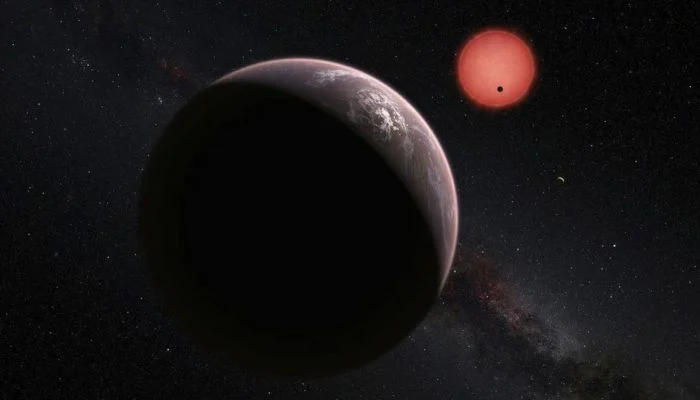A large and distant object orbiting far beyond Neptune may be the newest addition to our solar system’s family of dwarf planets. Measuring approximately 700 kilometers (435 miles) across, the newly discovered body — designated 2017 OF201 — has been detected in the cold outer regions of the solar system, raising fresh questions about the structure and population of this largely unexplored frontier.
The object, spotted through observations using telescopes in Chile and Hawaii over a span of seven years, follows an extremely stretched and elliptical orbit around the sun. It takes an estimated 25,000 years to complete a single revolution — a far cry from Earth’s 365-day orbit — placing it among the most distant solar system bodies ever recorded.
Lead researcher Dr. Sihao Cheng of the Institute for Advanced Study in Princeton, along with co-authors Jiaxuan Li and Eritas Yang from Princeton University, believes that 2017 OF201 could qualify as a dwarf planet, given its likely spherical shape and substantial size.
“The object appears to be just under the size of Ceres, the smallest recognized dwarf planet,” Cheng explained. For reference, Ceres spans about 950 kilometers in diameter, while Pluto, the largest dwarf planet, measures around 2,377 kilometers.
Though its exact composition remains unknown due to its vast distance from Earth, scientists suspect 2017 OF201 may share characteristics with other icy trans-Neptunian objects. Its highly eccentric orbit brings it as close as 45 astronomical units (AU) from the sun and as far as 1,600 AU — meaning it ranges from inside Pluto’s orbit to more than 1,600 times Earth’s distance from the sun.
The discovery was made public by the Minor Planet Center of the International Astronomical Union (IAU) and detailed in a preliminary research paper posted to the arXiv preprint server. The findings have not yet undergone formal peer review.
According to Cheng, the object’s extreme orbital path may point to a dramatic past interaction, possibly involving gravitational forces from a massive planet.
The orbit of 2017 OF201 also adds a new dimension to the ongoing debate over the theorized “Planet Nine” — a proposed but unconfirmed planet believed to influence the orbits of several distant solar system objects. Most such bodies tend to exhibit orbital clustering, but 2017 OF201 deviates from this pattern, potentially challenging existing models that support the Planet Nine hypothesis.
While only five dwarf planets are officially recognized by the IAU — Ceres, Pluto, Haumea, Makemake, and Eris — Cheng believes that many more may await discovery in the outer solar system. “There could be hundreds of objects similar in size and orbit to 2017 OF201,” he said. “They’re simply too far away for our current telescopes to detect.”
With advances in telescope technology and deeper surveys of the solar system’s outskirts, researchers are hopeful that more such hidden worlds may soon come into view — reshaping our understanding of the distant frontiers of our cosmic neighborhood.




